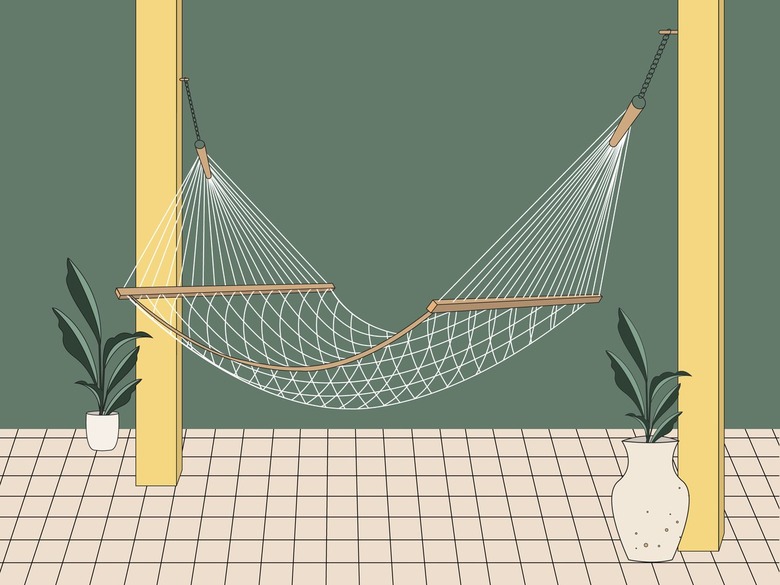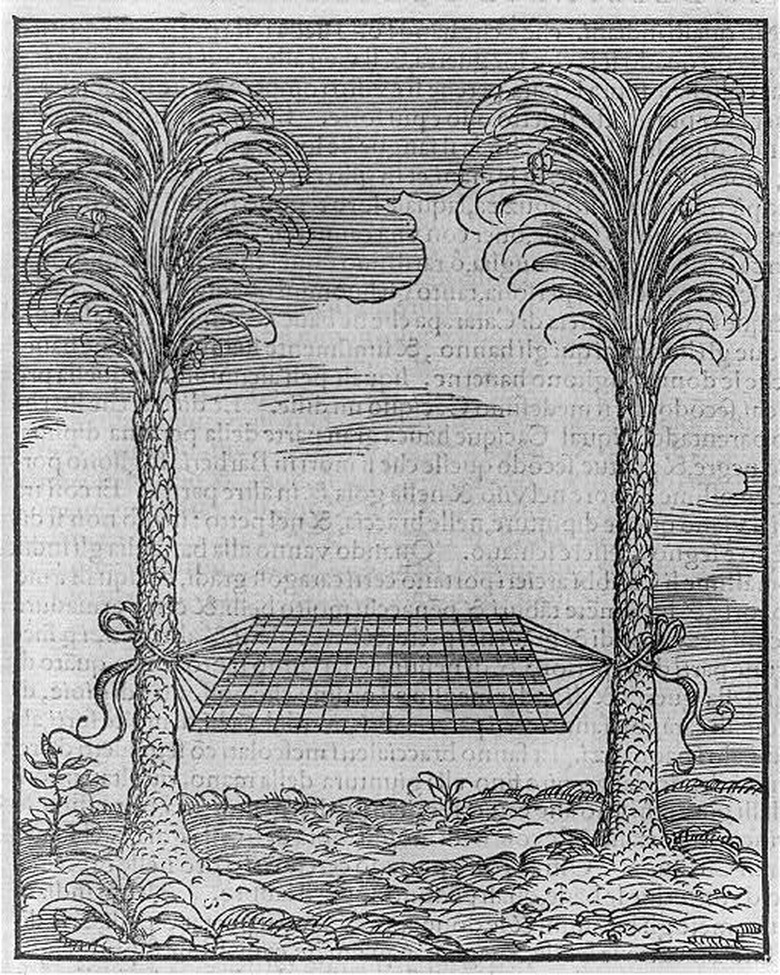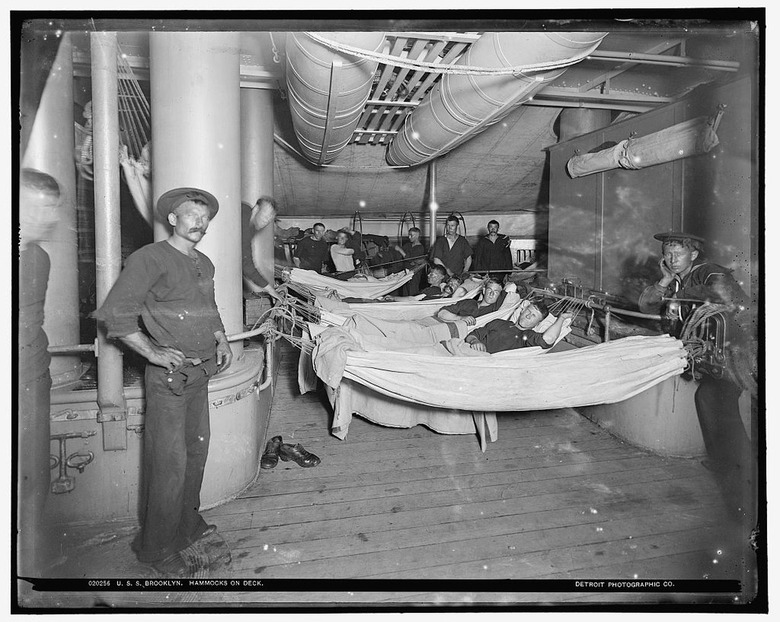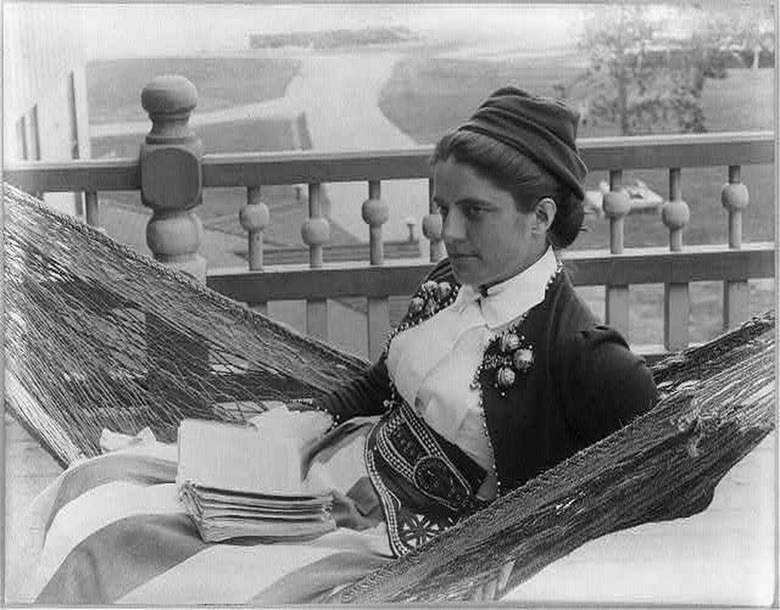The History Of The Hammock Is One Of Indigenous Innovation
There is nothing better than lounging in a hammock on a sunny day. However, a hammock wasn't always synonymous with luxury — in fact, it used to be seen as a form of protection.
The word "hammock," according to outdoor gear brand Kammock, comes from the Taíno people's word for "fish net." Smithsonian Magazine reports that the Taíno were a part of the Arawak group of Indigenous peoples who lived in the Caribbean and South America. As for the physical hammock itself, it is said that the item was created by the Mayans, using plant fibers and tree bark, about 1,000 years ago.
Though we now see the hammock as a form of leisure, it did not start out that way. Atlas Obscura states that hammocks were actually created to protect people from dangerous critters and insects on the ground.
Then, along came Christopher Columbus, who saw the hammock when he landed in the "new world." According to La Siesta, on October 17, 1492, Columbus wrote down that "people were sleeping in nets between the trees." He, of course, took the idea and brought it back to Europe.
After the hammock was introduced to Europeans, sailors started using canvas versions of the bed as a means of safely and sanitarily sleeping aboard ships. Barry Pickthall, the author of A History of Sailing in 100 Objects, writes that the United Kingdom's Royal Navy officially adopted canvas hammocks in 1597 and used them on its ships until the 1950s.
Speaking of canvas, Kammock states that during Spain's colonial period, both canvas and cotton were also introduced to the Americas. This led to the hammock fabric we are familiar with today.
According to Serenity Health & Home Decor, the first mass-produced hammock came from a company in South Carolina beginning in 1889. This appears to be referring to Pawleys Island Hammocks, especially since the brand states that it is "now possibly the best-known hammock brand in history, long ago having become the template for the classic American hammock style."
Once the hammock gained popularity amongst the non-sailing public, the wealthy used it as a leisure item while people on the frontier saw it primarily as a bed.
During the late 19th century, British prisons even started using hammocks in place of cots, since they were cheaper and saved space. Eventually, however, prisons had to do away with hammocks because prisoners began using the hooks as weapons.
Nowadays, hammocks are still used as both a form of leisure and a place to sleep. Even companies like Google, HubSpot, and Box Inc. have integrated hammocks into the workplace as a space for employees to work and nap, states Kammock.
As for who we should thank for the hammock, that honor goes to the Indigenous peoples of South and Central America.



